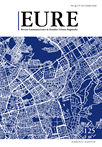Citizen insecurity and social differentiation at the micro-level: The case of Santo Tomás, Santiago, Chile
DOI:
https://doi.org/10.4067/S0250-71612016000100005Keywords:
citizen insecurity, urban periphery, social integrationAbstract
There are large areas of social housing on the periphery of Santiago city, characterized by high concentration of economic and material precariousness, spatial segregation and social fragmentation processes. Along with this, high levels of fear of crime and citizen insecurity related to the actions of criminal groups are noted. Based on a research carried out in the area known as Santo Tomás, at the south of Santiago, the analysis is focused on the role of citizensÍ€™ insecurity in social differentiation in a context of ghettoized poverty. The article focuses on the discursive practices of neighbors, which account for existing judgments about Í€œthe dangerÍ€ and Í€œthe deviantÍ€. Finally, the article discusses how such judgments reinforce (or not) the dynamics of the undermining of social capital at micro-level.Downloads
Published
How to Cite
Issue
Section
License
Copyright (c) 2015 Revista EURE - Revista de Estudios Urbano Regionales

This work is licensed under a Creative Commons Attribution 4.0 International License.
Al momento de aceptar la publicación de sus artículos, los autores deberán formalizar la cesión de derechos de autor a EURE, según las condiciones establecidas por la Revista.
Ésta establece que el autor autoriza a EURE de manera gratuita, exclusiva e ilimitada a reproducir, editar, publicar, distribuir, publicitar, comercializar y traducir el artículo, a cualquier soporte conocido o por conocer y desarrollar.
Del mismo modo, los autores aseguran que el artículo propuesto es original, no publicado y no propuesto para tal fin a otro medio de difusión.


